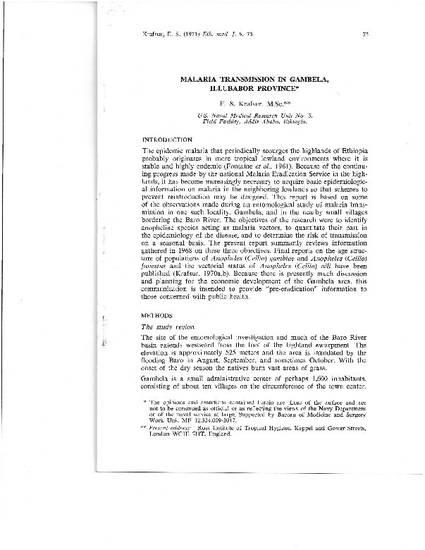
Article
Malaria transmission in Gámbela, Illubabor Province
Ethiopian Medical Journal
(1971)
Abstract
The epidemic malaria that periodically scourges the highlands of Ethiopia probably originates in more tropical lowland environments where it is stable and highly endemic (Fontaine et al., 1961). Because of the continuing progress made by the national Malaria Eradication Service in the highlands, it has become increasingly necessary to acquire basic epidemiological information on malaria in the neighboring lowlands so that schemes to prevent reintroduction may be designed. This report is based on some of the observations made during an entomological study of malaria transmission in one such locality, Gambela, and in the nearby small villages bordering the Baro River. The objectives of the research were to identify anopheline species acting as malaria vectors, to quantitate their part in the epidemiology of the disease, and to determine the risk of transmission on a seasonal basis. The present report summarily reviews information gathered in 1968 on these three objectives. Final reports on the age structure of populations of Anopheles (Cellia) gambiae and Anopheles (Cellia) funestus and the vectorial status of Anopheles (Cellia) nili have been published (Krafsur, 1970a,b). Because there is presently much discussion and planning for the economic development of the Gambela area, this communication is intended to provide "pre-eradication" information to those concerned with public health.
Disciplines
Publication Date
1971
Publisher Statement
Works produced by employees of the U.S. Government as part of their official duties are not copyrighted within the U.S. The content of this document is not copyrighted.
Citation Information
E. S. Krafsur. "Malaria transmission in Gámbela, Illubabor Province" Ethiopian Medical Journal Vol. 9 Iss. 2 (1971) p. 75 - 94 Available at: http://works.bepress.com/elliot-krafsur/28/
